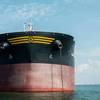ITL Technologies Allows Containerships To Carry All Size Cargoes
If you ask Bernie Sain what can be shipped on a container vessel, he would
answer, "Everything!" As President and CEO of ITL Technologies (ITLT) and
Chairman of ITLT¹s parent company, International Transport Industries,
Bernie Sain is leading the containerized shipping industry into unchartered
waters. Today¹s intermodal shippers and ocean carriers are looking for ways
to transport more goods and improve efficiency, without increasing cost.
Most people would be quick to tell a shipper "good luck," but Bernie Sain is
quick to say, "No problem."
Mr. Sain backs up his confidence with his 27 U.S. patents for inventions
used in the U.S. Air Force, medical industry and the marine transportation
industry. Mr. Sain coordinates ITLT¹s sales activities, equipment
engineering, facilities development and research and development. He likes
to describe ITLT with one simple statement, "We invent solutions."
Moving oversized goods, non-standard containers and large quantities of
product has long been a logistical problem. Increased labor costs and
multiple shipments have left both carriers and shippers looking for answers.
According to Mr. Sain, "With the people, knowledge and experience we have
at ITLT, we are confident that we can always provide a solution for any
marine transportation problem." With that belief as the motivation, ITLT
has developed two new products that are sure to change the landscape of
marine transportation. The Sain Beam System³ (SBS) and Contrail³ allow
carriers to increase productivity while reducing costs.
In order to provide true value-added service, ocean carriers can now offer
their customers 48-foot x 102-inch and 53-foot x 102-inch containers. These
containers provide a significantly higher yield per unit than conventional
40- and 20- foot containers. The problem carriers face is whether they
should offer these larger containers and deal with the cost of reconfiguring
their ships, or continue to only offer customers the standard 20- and
40-foot units.
ITLT went to work looking to provide an efficient, flexible and
cost-effective means for ocean container carriers to handle "oversized"
containers without the need to modify ships. The SBS system was developed
with both the shipper and carrier in mind. The SBS system offers the
opportunity to mix conventional 96-inch wide containers with wider 102-inch
wide containers on the same stack, as well as 45, 48 and 53-foot long boxes.
Pairs (fore and aft) of the SBS beams are designed to load and unload at the
same cycle time as containers. Standard beams are approximately 32-foot
long spanning four 96-inch wide containers. Bays handling sixteen 96-inch
wide containers per tier can handle fifteen 102-inch wide containers per
tier by utilizing the beams. Standard container gantry crane spreaders are
used to load each beam set. The beams are locked into the corner posts on
top of each 96-inch wide container. With the beams in place, 102-inch wide
containers can be loaded onto the beams. These overwide containers can be
stacked three high on the beams.
The beams can be designed to meet specific applications when needed.
Several carriers have already begun to see the advantages in the form of
improved market penetration, increased revenues, reduced costs and flexible
cargo handling and stowage; all with minimal capital investment and no
downtime for ship modification. SBS beams are lightweight, easy to install
and remove and are stacked or stowed on a flat rack onboard the ship when
not in use.
"In today¹s marine transportation industry everyone is looking for a way to
improve efficiencies while minimizing risk. The SBS system allows carriers
to move more cargo and improve safety without a large financial risk," Sain
stated. By using the larger containers, carriers can reduce the need to
re-handle and cross-dock freight. This not only reduces labor costs, but it
also lowers freight losses due to breakage or shrinkage.
According to Sain, "The value added benefit allows shippers to justify
paying an increased ocean freight charge for a larger container because they
reduce their per unit costs of drayage, stuffing, unstuffing and intermodal
transportation." These customer service, revenue-enhancing benefits permit
an ocean carrier to charge higher total freight rates.
While ITLT and its customers were satisfied with the results SBS produced,
Bernie Sain knew there was still another issue. "We have customers who deal
with Ooversized¹ cargo that does not fit into conventional containers." Sain
continued explaining, "They wanted a solution that provided the same
benefits that SBS provided." From this problem Contrail³ was born.
Due to high labor costs and the need to reconfigure the gantry crane
spreader bar used to load and unload cargo, out-of-gauge cargo becomes very
expensive to handle. This cargo does not lend itself to effective space
utilization onboard a container ship. Contrail³ makes it possible to handle
"oversized" cargoes with existing equipment and to reduce the costs of
securing such cargoes.
By using Contrail³, out-of-gauge cargo can be lifted and stowed quickly and
safely. Cargo can be loaded with normal crane and spreader configurations.
According to Sain, "The time and expense of loading and unloading
Ooversized¹ cargo has been greatly reduced by Contrail³. This is another
way carriers can increase their profitability. Not only is ship space
better utilized, the labor costs for loading and unloading this cargo is
greatly reduced, since it takes fewer longshoremen to secure the cargo."
A single Contrail³ unit is 120 inches wide (10-feet) and can be stowed on
top of a stack of 96-inch wide containers or on SBS beams. The Contrail³
unit¹s height is adjustable, allowing carriage of over-height cargo and also
allowing the unit to be stowed in container stacks with SBS beams on top.
Carriers can now book "oversized" cargoes without hesitation, because space
utilization and cargo handling time and expense are minimized. Carriers can
also confidently market and price their services to the out-of-gauge cargo
market because handling costs are known and space requirements are
minimized. "Anytime you can enter a competitive environment, such as
out-of-gauge cargoes, by improving service and reducing costs, you are going
to win the business more times than not," commented Sain.
"We want our customers to be able to deliver the best service to their
customers." In order to help customers reach their goals, ITLT works with
them to make sure everyone succeeds. Both SBS and Contrail³ can be
purchased or leased or, if the customer wants, he can manufacture the units
himself by following certain guidelines. "Our customer¹s success is our
success, so we make sure agreements are mutually beneficial."
While the benefits of SBS and Contrail³ are obvious for commercial ocean
carriers, ITLT¹s future will include an important relationship with the
military. "The ability to move Ooversized¹ cargo efficiently and cost
effectively is a natural fit for any military division." Sain continued,
"The military has special needs that aren¹t necessarily faced in the
commercial industry. The military understands that ITLT will adapt its
systems to fit their specific needs."
The popularity of SBS and Contrail³ has been steadily growing since their
introduction, but both Bernie Sain and the ITLT organization are inventors
at heart. ITLT is actively working on new products that will continue to
increase space utilization and operational efficiency, all while being
conscious of the bottom line. "Our commitment to think outside-of-the-box,
will be the foundation upon which we continue to develop new technologies to
meet customer and market requirements." Sain summed up ITLT¹s future with
one simple statement, "At ITLT we never accept situations as they appear. As
solution-oriented activists, we have created ideas and new technology since
the inception of our company to meet the needs of the world trade market. We
are committed to that philosophy."













